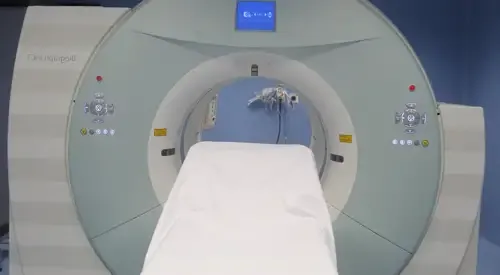Takayasu's Arteritis
"In terms of prognosis, mortality is less than 10% and morbidity is somewhat higher in relation to the disease itself and the treatments used".
DR. ENRIQUE ORNILLA
SPECIALIST. RHEUMATOLOGY SERVICE

Takayasu's disease or Takayasu's arteritis is a rare disease, of unknown cause, characterized by vasculitis, that is, a chronic inflammation of the blood vessels: it affects, above all, the medium and large caliber arteries, mainly the aorta and its main branches, the supra-aortic trunks.
It is more common in women and usually begins at an early age, between the third and fourth decades of life.
Takayasu's arteritis should be considered in any young woman who presents with clinical signs suggestive of claudication, visual alterations, syncope or angina, especially in the context of alterations in blood pressure, murmurs or loss of pulses.

What are the symptoms of Takayasu arteritis?
The symptoms produced by this disease are very variable and can manifest themselves in a very slow and progressive manner. They are due to the affectation of these arteries and show the lack of irrigation in the territories they irrigate.
For that reason, the peripheral pulse cannot be detected or the blood pressure taken in the areas where there are affected arteries.
In addition to the manifestations of ischemia in the affected territories, a general picture can also be associated with fatigue, lack of appetite, fever or febrile illness, etc.
What are the most common symptoms?
- Localized pain.
- Ischemia.
- Decrease in palpable pulses.
- Affection of the general state with fever, sweating asthenia and weight loss.
Do you have any of these symptoms?
You may have Takayasu arteritis
What are the causes of Takayasu arteritis?
As with all vasculitis, the causes are unknown. However, as in temporal arteritis, there seems to be a genetic predisposition to this disease.
What are the complications of Takayasu arteritis?
The evolution of the patient with Takayasu arteritis may be compromised by complications such as:
- Retinopathy with microaneurysms and arteriovenous anastomosis
- Arterial hypertension
- Aneurysm formation
- Aortic Regurgitation
How is Takayasu arteritis diagnosed?

Based on the clinical and radiological characteristics, some criteria have been established, of which at least three must be met to confirm the diagnosis.
- Intermittent claudication, especially of the upper extremities.
- Age of onset of the disease equal to or less than 40 years.
- Decreased pulse in one or both brachial arteries.
- Difference in systolic blood pressure between both arms greater than 10 mm/Hg.
- Audible murmur on auscultation over one or both subclavian arteries or the abdominal aorta.
- Abnormal arteriography, characterized by the presence of stenosis and arterial dilations.
The performance of a Positron Emission Tomography (PET) currently represents the technique par excellence for diagnosis.
How is Takayasu's arteritis treated?
It is very important to control the risk factors of this disease
The treatment of Takayasu's arteritis is based on two fundamental pillars: drugs, mainly to control the inflammatory process; and invasive techniques (surgery or angioplasty), to correct or dilate the areas of stenosis.
Pharmacological treatment is based on glucocorticoids. In most cases it is necessary the association of immunosuppressors. Lately, the use of biological treatments, such as anti-TNF monoclonal antibodies, has shown very encouraging results.
In advanced phases of the disease, the treatment combined with invasive techniques, aimed at saving the areas of stenosis, has shown to be very effective in this respect, correcting in an acute way the focal ischemia and avoiding the possible serious complications of this arteritis, such as strokes and congestive heart failure.
It is very important to control other cardiovascular risk factors such as high blood pressure, hypercholesterolemia, hyperglycemia and, fundamentally, smoking.
Where do we treat it?
IN NAVARRE AND MADRID
The Rheumatology Service
of the Clínica Universidad de Navarra
The Rheumatology Service has a multidisciplinary team highly specialized in the diagnosis and treatment of rheumatological diseases, from osteoarthritis, arthritis or osteoporosis to autoimmune or inflammatory diseases.
In addition, we have doctors specialized in assisting pregnant women with autoimmune diseases, in order to guarantee the maximum safety of the fetus.
Organized in specialized units
- Inflammatory arthropathies.
- Degenerative arthropathies.
- Microcrystalline arthropathies.
- Bone pathology.
- Systemic autoimmune diseases.
- Autoinflammatory diseases.

Why at the Clinica?
- Valoración integral del paciente.
- Diagnóstico personalizado.
- Tecnología de vanguardia.




